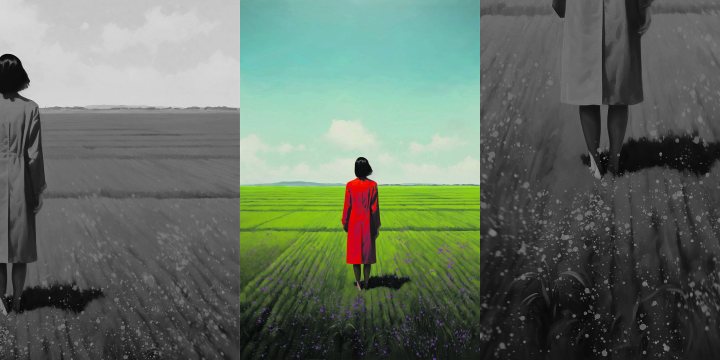POET’S CORNER
The sonnet — weaving an elegant thread of timeless appeal

The popularity of this type of poetry, with its ability to enchant and engage, can be attributed to its versatile structure.
The sonnet, a poetic form immortalised by the likes of Shakespeare and Petrarch, has remarkably endured the test of time, weaving its way through the ever-evolving landscape of poetic expression to maintain its popularity well into the 21st century.
Consider the opening stanza of John Masefield’s sonnet Posted:
“Dream after dream I see the wrecks that lie / Unknown of man, unmarked upon the charts, / Known of the flat-fish with the withered eye, / And seen by women in their aching hearts.”
This verse not only exemplifies one of the sonnet’s traditional rhyme schemes (abab) but also underscores the necessity of all of poetry’s tools to trance and touch and wake.
The 20th century witnessed a particular series of radical departures from traditional poetic forms, as evidenced by movements such as modernism, which represented a deliberate pivoting away from established norms to capture the splintered realities of the modern era.
Similarly, imagism championed the potency of imagery and free verse to evoke emotion directly, while the Harlem Renaissance shone a torch on the face of the African-American experience, emphasising ethnic identity and a thirst for rights. Beat poetry distinguished itself by challenging prevailing American values, promoting non-conformity and a rejection of mainstream consumerism.
Despite the emergence of these and other movements, each marking a significant shift in the poetic paradigm, the sonnet has demonstrated remarkable flexibility, adapting and thriving amid changes in literary expression. Its sustained popularity can be attributed to its versatile structure, which allows for emotional depth and intellectual complexity within a concise and elegant framework. This adaptability has ensured that the sonnet remains a living form in the Western canon and beyond, a testament to its timeless appeal and enduring relevance across the tapestry of poetic tradition.
If you’re reading this, it’s more than likely that you have a certain appetite for poetry, perhaps extending even to the act of crafting it yourself. If so, I can’t help but wonder whether you’ve ventured into the realm of sonnet writing.
The world of poetry is rich with diverse forms that range from the freely creative to the rigorously structured.
For the novice poet, the path is paved with potential dangers, particularly when engaging with the more stringent, scanned, rhymed formats. Yet it is within these rigorous confines that a budding poet often finds the most fertile ground for development, honing their craft and mastering the nuances of the art.
This process mirrors the journey of painters like Picasso, who initially mastered classical techniques before breaking away to discover their unique styles and palettes. Such a journey lays bare the vital role played by foundational discipline in the pursuit of individual, artistic expression.
For those intrigued by the workings of poetic forms, Elizabeth Bishop’s Sestina and Ezra Pound’s Sestina: Altaforte are exemplary showcases of the sestina’s demanding pattern and its capacity for emotional and thematic exploration. While Pound’s political affiliations have sparked controversy, it’s important to distinguish between the artist and their creations. This distinction allows us to appreciate the craft while maintaining a critical perspective on the creator’s ideologies and principles.
The analogy (which I subscribe to) that one might admire a painting for its aesthetic value, irrespective of the painter’s character, underscores this point. This perspective is extended to historical figures known more for their infamy than their artistic talent, highlighting the fortunate disconnect between an individual’s moral standing and their artistry. The reason I’m so happy that Hitler was a lousy painter.
For those keen to explore the rich realm of sonnets, Robert Frost’s Acquainted with the Night and WB Yeats’s A Crazed Girl are highly recommended.
Frost’s work offers a profound exploration of solitude and introspection, while Yeats’s poem captivates one with its imagery and emotional depth from the first lines, like a song that catches you with voice and melody after the initial beats. Both poems exemplify the sonnet’s potential to engage and enchant.
These recommendations serve not only as an entry point, but also as a testament to the power of poetry to transcend the boundaries of its creator’s physical existence, inviting you into a new world. You can do anything with form (e.g. the sonnet) and with non-form (e.g. free verse). And while we’re at it, if I have led you to believe that it’s easier to write non-form poems, I apologise. It is not, and it may even be more complicated. Robert Frost, who used form well, was fond of comparing the writing of free verse to playing tennis with the net down.
In the study “Trends in Modern African Poetic Composition: Identifying the Canons” by Mathias Orhero, published in 2017, we’re taken on a trip through the world of African poetry. The author unveils eight unique canons that paint a picture of this diverse poetic tradition. These canons not only highlight the evolution and variety of African poetry, but also celebrate its resonance. They are:
- Pioneer poetry: A toast to the trailblazers, the original foundation layers, celebrating Africa’s spirit and stories.
- Modernist poetry: Here, poetry mirrors the dance of life, weaving new themes with fresh style and perspectives.
- Disillusionment poetry: Using poignant text, this canon speaks to the heartache of unfulfilled promises and post-struggle disappointment.
- Civil War poetry: This uses stark imagery to address domestic wars and the longing for peace and the quest for peace.
- Alter/native poetry: A challenge to the status quo, this canon reimagines identity, embracing a redefined sense of self.
- Apartheid poetry: Born along the frontlines of resistance, these poems echo the anguish and hope of apartheid opponents, visualising equality for all.
- Niger Delta/eco-poetry: This canon highlights environmental and socioeconomic crises, seeking harmony between nature and humanity.
- Contemporary poetry: This is a kaleidoscope of themes and styles, reflecting the pulse of African poetry as it evolves into the new world.
And there you have it.
Poetic form is ubiquitous and, when done correctly, is music to the ears. It’s important to insist here that free verse does have form, even if that form is imposed only by the poem itself.
Every word will have its favourite place and each line its preferred length. Disturb that arrangement and you have replaced the cornerstone with an ice block. You’ll know any poem is finished not when you can no longer add words or punctuation, but when you can no longer remove any. DM
Rethabile Masilo is a Mosotho poet from Lesotho who lives in Paris, France.
Sonnet
By Alice Dunbar-Nelson
I had no thought of violets of late,
The wild, shy kind that spring beneath your feet
In wistful April days, when lovers mate
And wander through the fields in raptures sweet.
The thought of violets meant florists’ shops,
And bows and pins, and perfumed papers fine;
And garish lights, and mincing little fops
And cabarets and songs, and deadening wine.
So far from sweet real things my thoughts had strayed,
I had forgot wide fields, and clear brown streams
The perfect loveliness that God has made,—
Wild violets shy and Heaven-mounting dreams.
And now – unwittingly, you’ve made me dream
Of violets, and my soul’s forgotten gleam.
The Harlem Dancer
By Claude McKay
Applauding youths laughed with young prostitutes
And watched her perfect, half-clothed body sway;
Her voice was like the sound of blended flutes
Blown by black players upon a picnic day.
She sang and danced on gracefully and calm,
The light gauze hanging loose about her form;
To me she seemed a proudly-swaying palm
Grown lovelier for passing through a storm.
Upon her swarthy neck black shiny curls
Luxuriant fell; and tossing coins in praise,
The wine-flushed, bold-eyed boys, and even the girls,
Devoured her shape with eager, passionate gaze;
But looking at her falsely-smiling face,
I knew her self was not in that strange place. DM
This story first appeared in our weekly Daily Maverick 168 newspaper, which is available countrywide for R29.






People who don’t read poetry don’t know what they’re missing. Thanks for the reminder of the sonnet form – I shall write another one soon.
I hope you do write one soon. 🙂